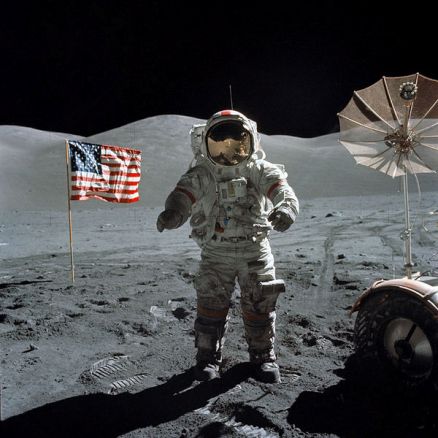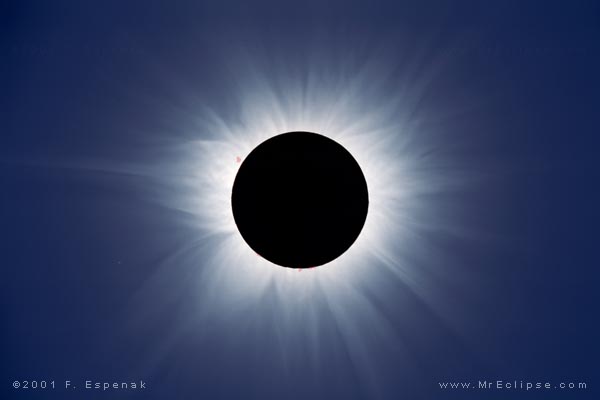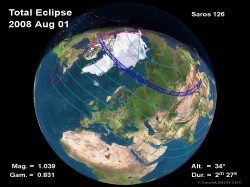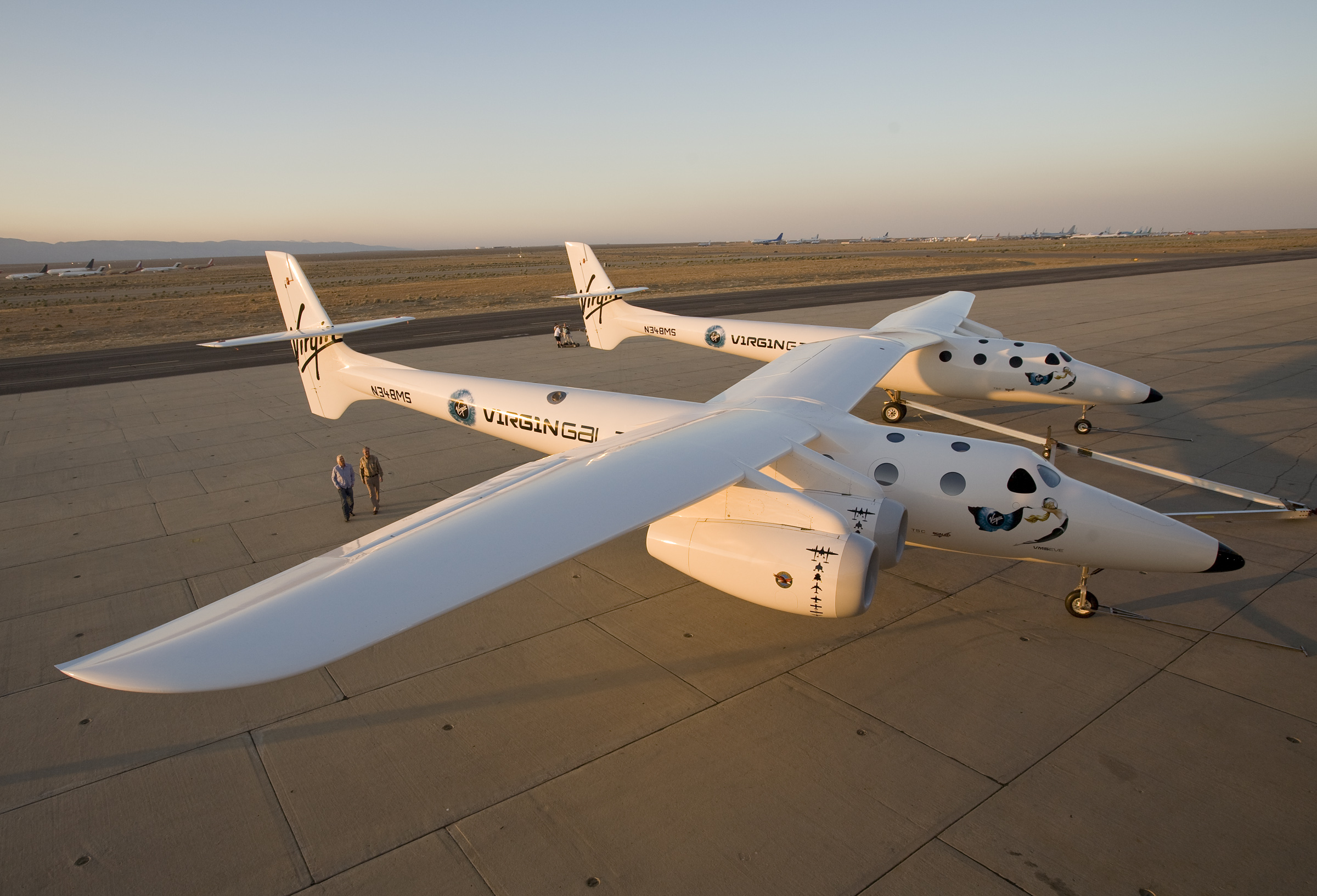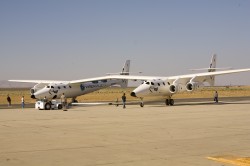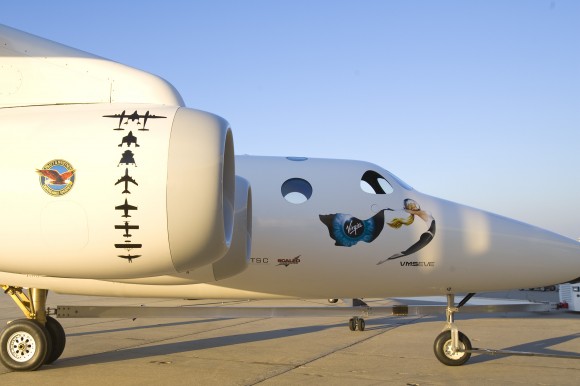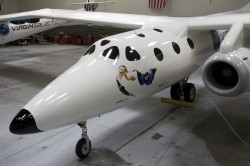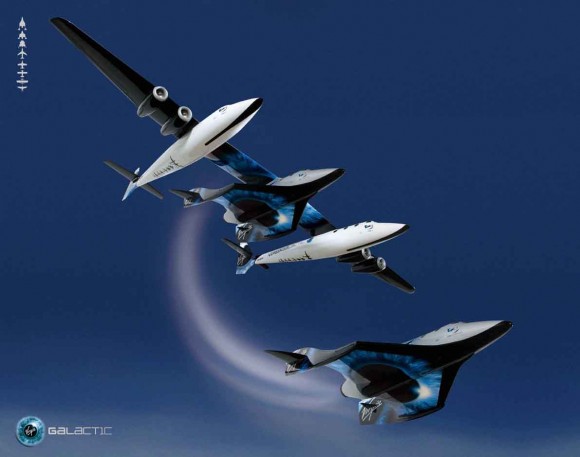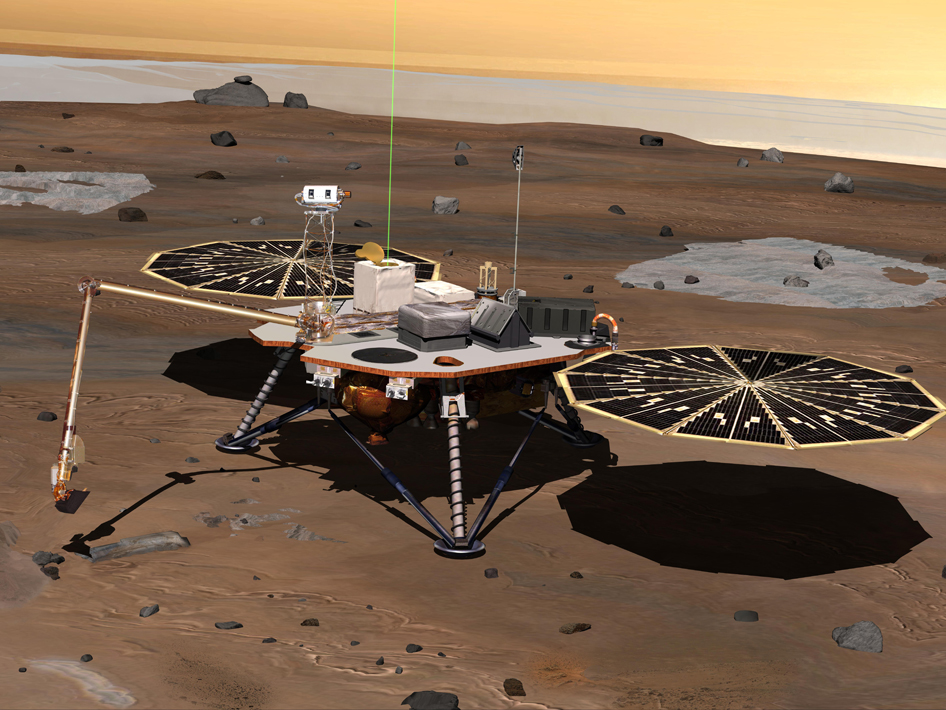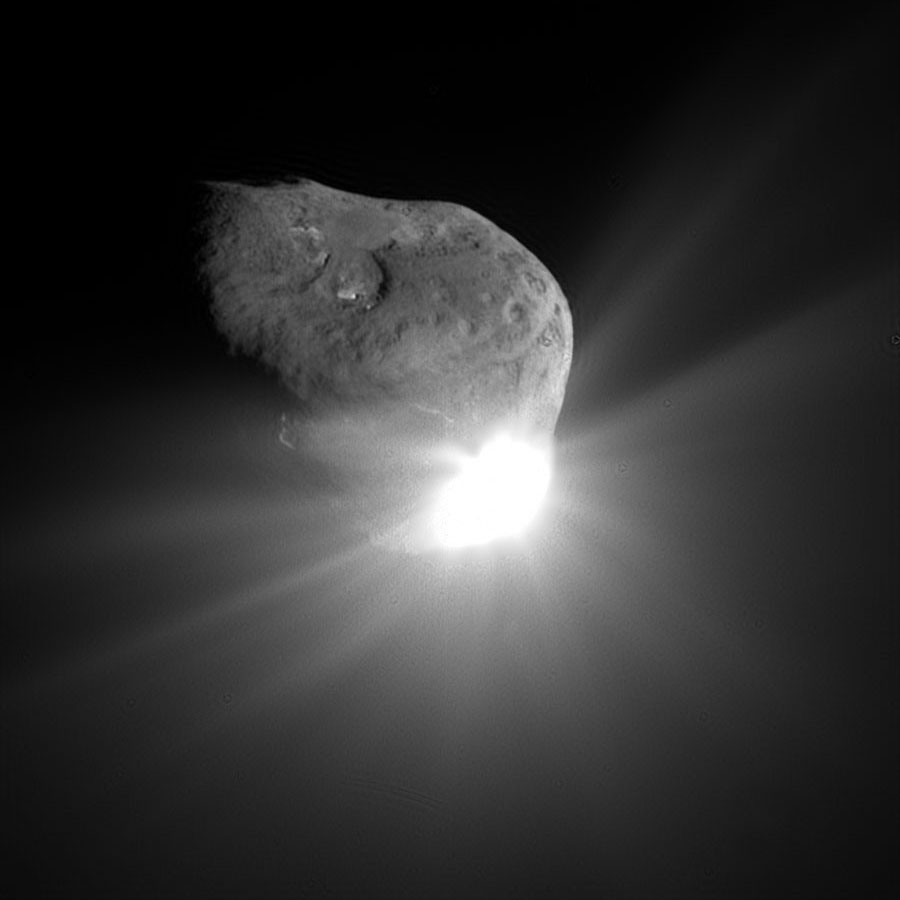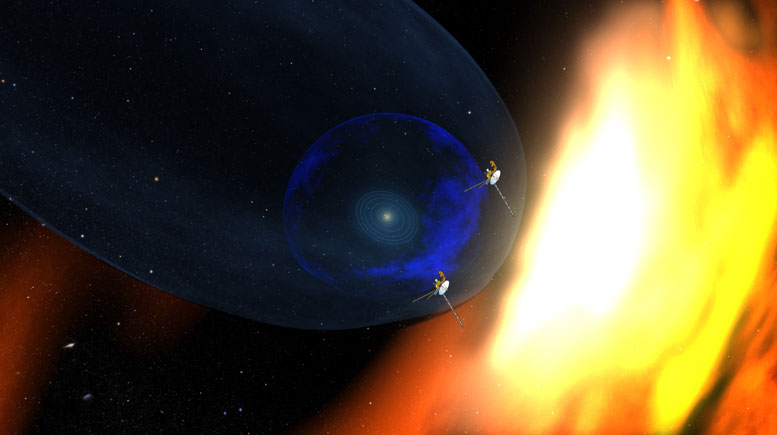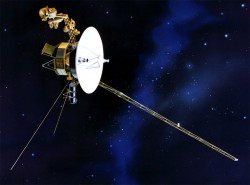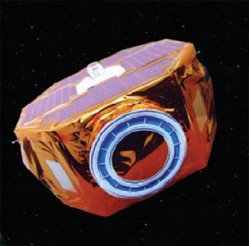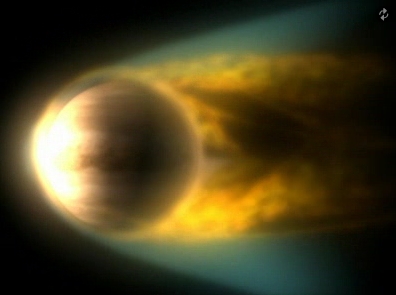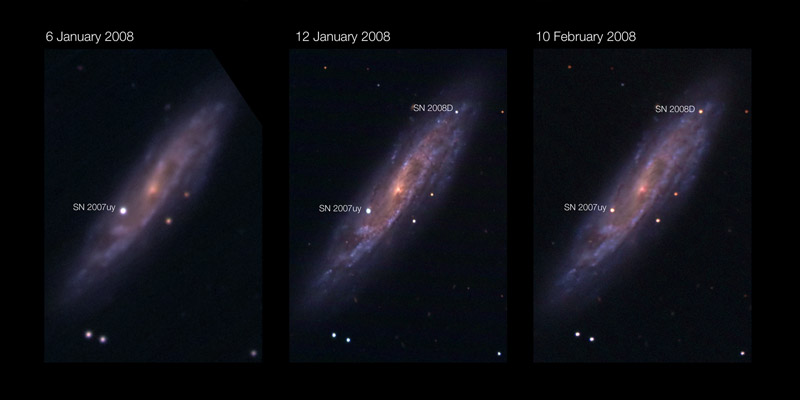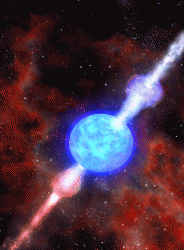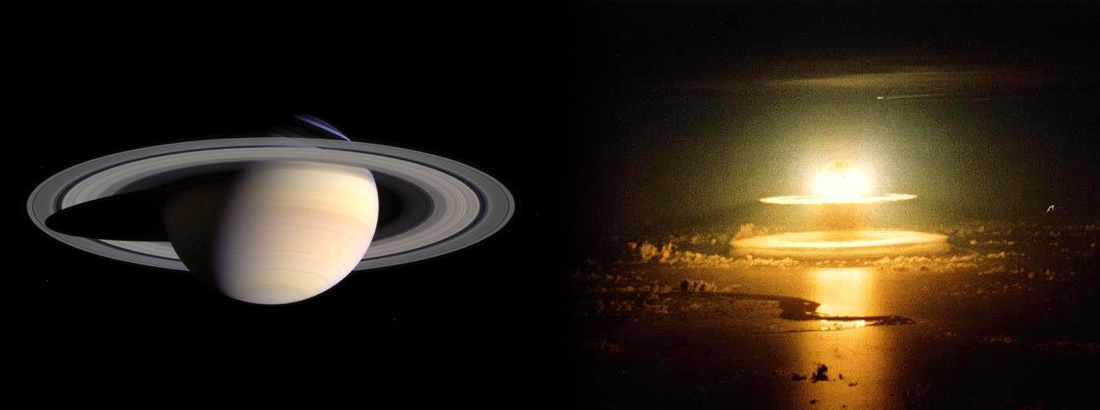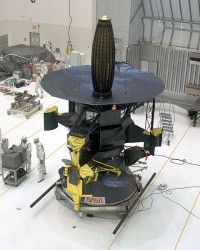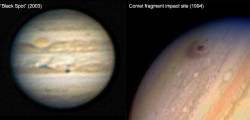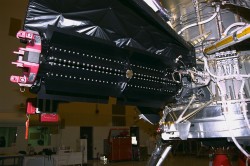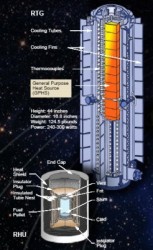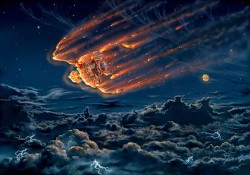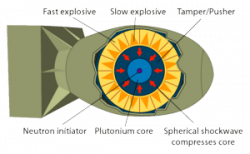[/caption]
The story: The Lucifer Project is allegedly the biggest conspiracy theory NASA could possibly be involved in. First, back in 2003, the space agency (in co-operation with secret and powerful organizations) dropped the Galileo probe deep into Jupiter’s atmosphere. On board, was a significant quantity of plutonium. As the probe fell though the atmosphere, NASA hoped atmospheric pressures would create an implosion, generating a nuclear explosion thereby kick-starting a chain reaction, turning the gas giant into a second Sun. They failed. So, in a second attempt, they will drop the Cassini probe (again, laden with plutonium) deep into Saturn’s atmosphere in two years time, so this smaller gas giant can succeed where Jupiter failed…
The reality: As investigated briefly in Project Lucifer: Will Cassini Turn Saturn into a Second Sun? (Part 1), we looked at some of the technical problems behind Galileo and Cassini being used as makeshift nuclear weapons. They cannot generate an explosion for many reasons, but the main points are: 1) Tiny pellets of plutonium used to heat and power the probes are in separate, damage-proof cylinders. 2) The plutonium is not weapon grade, meaning the 238Pu makes a very inefficient fissionable fuel. 3) The probes will burn up and break apart, therefore disallowing any chance of lumps of plutonium forming “critical mass” (besides, there is no chance the plutonium could possibly form a configuration to create an implosion-triggered device).
OK, so Galileo and Cassini cannot be used as crude nuclear weapons. But say if there was a nuclear explosion inside Saturn? Could it cause a chain reaction in the core, creating a second Sun?
- Project Lucifer: Will Cassini Turn Saturn into a Second Sun? (Part 1)
- Project Lucifer: Will Cassini Turn Saturn into a Second Sun? (Part 2)
Thermonuclear bombs
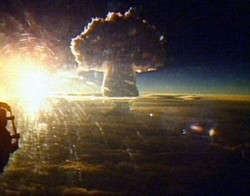
Unless nuclear fusion can be maintained within a stellar body, the reaction will very quickly fizz out. So the Lucifer Project proposes Cassini will plunge many hundreds of miles into the atmosphere of Saturn and explode as a crude plutonium-fuelled fission explosion. This explosion will cause a chain reaction, creating enough energy to trigger nuclear fusion inside the gas giant.
I can see where this idea has come from, even though it is inaccurate. The fusion bomb (or “thermonuclear weapon”) uses a fission trigger to kick-start an uncontrolled fusion reaction. The fission trigger is constructed to explode like a normal fission bomb much like the implosion device described in Part 1 of this series. When detonated, huge quantities of energetic X-rays are produced, heating the material surrounding the fusion fuel (such as lithium deuteride), causing the phase transition to a plasma. As very hot plasma is surrounding the lithium deuteride (in a very confined and pressured environment) the fuel will produce tritium, a heavy hydrogen isotope. Tritium then undergoes nuclear fusion, liberating huge quantities of energy as the tritium nuclei are forced together, overcoming the electrostatic forces between nuclei and fusing. Fusion releases large quantities of binding energy, more-so than fission.
How does a star work?
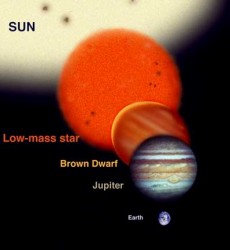
The point that needs to be emphasised here is that in a thermonuclear device, fusion can only be attained when immense temperatures are reached within a very confined and pressurized environment. What’s more, in the case of a fusion bomb, this reaction is uncontrolled.
So, how are nuclear fusion reactions sustained in a star (like our Sun)? In the thermonuclear bomb example above, tritium fusion is achieved through inertial confinement (i.e. rapid, hot and energetic pressure on the fuel to cause fusion), but in the case of a star, a sustained mode of confinement is required. Gravitational confinement is needed for nuclear fusion reactions to occur in the core. For significant gravitational confinement, the star requires a minimum mass.
In the core of our Sun (and most other stars smaller than our Sun), nuclear fusion is achieved through the proton-proton chain (pictured below). This is a hydrogen burning mechanism where helium is generated. Two protons (hydrogen nuclei) combine after overcoming the highly repulsive electrostatic force. This can only be achieved if the stellar body has a large enough mass, increasing gravitational containment in the core. Once the protons combine, they form deuterium (2D), producing a positron (quickly annihilating with an electron) and a neutrino. The deuterium nucleus can then combine with another proton, thus creating a light helium isotope (3He). The outcome of this reaction generates gamma-rays that maintain the stability and high temperature of the star’s core (in the case of the Sun, the core reaches a temperature of 15 million Kelvin).
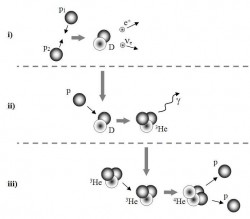
As discussed in a previous Universe Today article, there are a range of planetary bodies below the threshold of becoming a “star” (and not able to sustain proton-proton fusion). The bridge between the largest planets (i.e. gas giants, like Jupiter and Saturn) and the smallest stars are known as brown dwarfs. Brown dwarfs are less than 0.08 solar masses and nuclear fusion reactions have never taken hold (although larger brown dwarfs may have had a short period of hydrogen fusion in their cores). Their cores have a pressure of 105 million atmospheres with temperatures below 3 million Kelvin. Keep in mind, even the smallest brown dwarfs are approximately 10 times more massive than Jupiter (the largest brown dwarfs are around 80 times the mass of Jupiter). So, for even a small chance of the proton-proton chain occurring, we’d need a large brown dwarf, at least 80 times bigger than Jupiter (over 240 Saturn masses) to even stand the hope of sustaining gravitational confinement.
There’s no chance Saturn could sustain nuclear fusion?
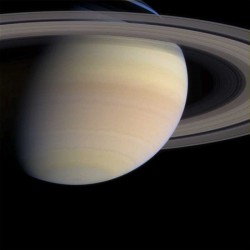
Sorry, no. Saturn is simply too small.
Implying that a nuclear (fission) bomb detonating inside Saturn could create the conditions for a nuclear fusion chain reaction (like the proton-proton chain) is, again, in the realms of science fiction. Even the larger gas giant Jupiter is far too puny to sustain fusion.
I have also seen arguments claiming that Saturn consists of the same gases as our Sun (i.e. hydrogen and helium), so a runaway chain reaction is possible, all that is needed is a rapid injection of energy. However, the hydrogen that can be found in Saturn’s atmosphere is diatomic molecular hydrogen (H2), not the free hydrogen nuclei (high energy protons) as found in the Sun’s core. And yes, H2 is highly flammable (after all it was responsible for the infamous Hindenburg airship disaster in 1937), but only when mixed with a large quantity of oxygen, chlorine or fluorine. Alas Saturn does not contain significant quantities of any of those gases.
Conclusion
Although fun, “The Lucifer Project” is the product of someone’s lively imagination. Part 1 of “Project Lucifer: Will Cassini Turn Saturn into a Second Sun?” introduced the conspiracy and focused on some of the general aspects why the Galileo probe in 2003 simply burned up in Jupiter’s atmosphere, scattering the small pellets of plutonium-238 as it did so. The “black spot” as discovered the next month was simply one of the many dynamic and short-lived storms often seen to develop on the planet.
This article has gone one step further and ignored the fact that it was impossible for Cassini to become an interplanetary atomic weapon. What if there was a nuclear explosion inside Saturn’s atmosphere? Well, it looks like it would be a pretty boring affair. I dare say a few lively electrical storms might be generated, but we wouldn’t see much from Earth. As for anything more sinister happening, it is highly unlikely there would be any lasting damage to the planet. There would certainly be no fusion reaction as Saturn is too small and it contains all the wrong gases.
Oh well, Saturn will just have to stay the way it is, rings and all. When Cassini completes its mission in two years time, we can look forward to the science we will accumulate from such an incredible and historic endeavour rather than fearing the impossible…
Update (Aug. 7th): As pointed out by some readers below, molecular hydrogen wasn’t really the cause of the Hindenburg airship disaster, it was the aluminium-based paint that may have sparked the explosion, hydrogen and oxygen fuelled the fire.


